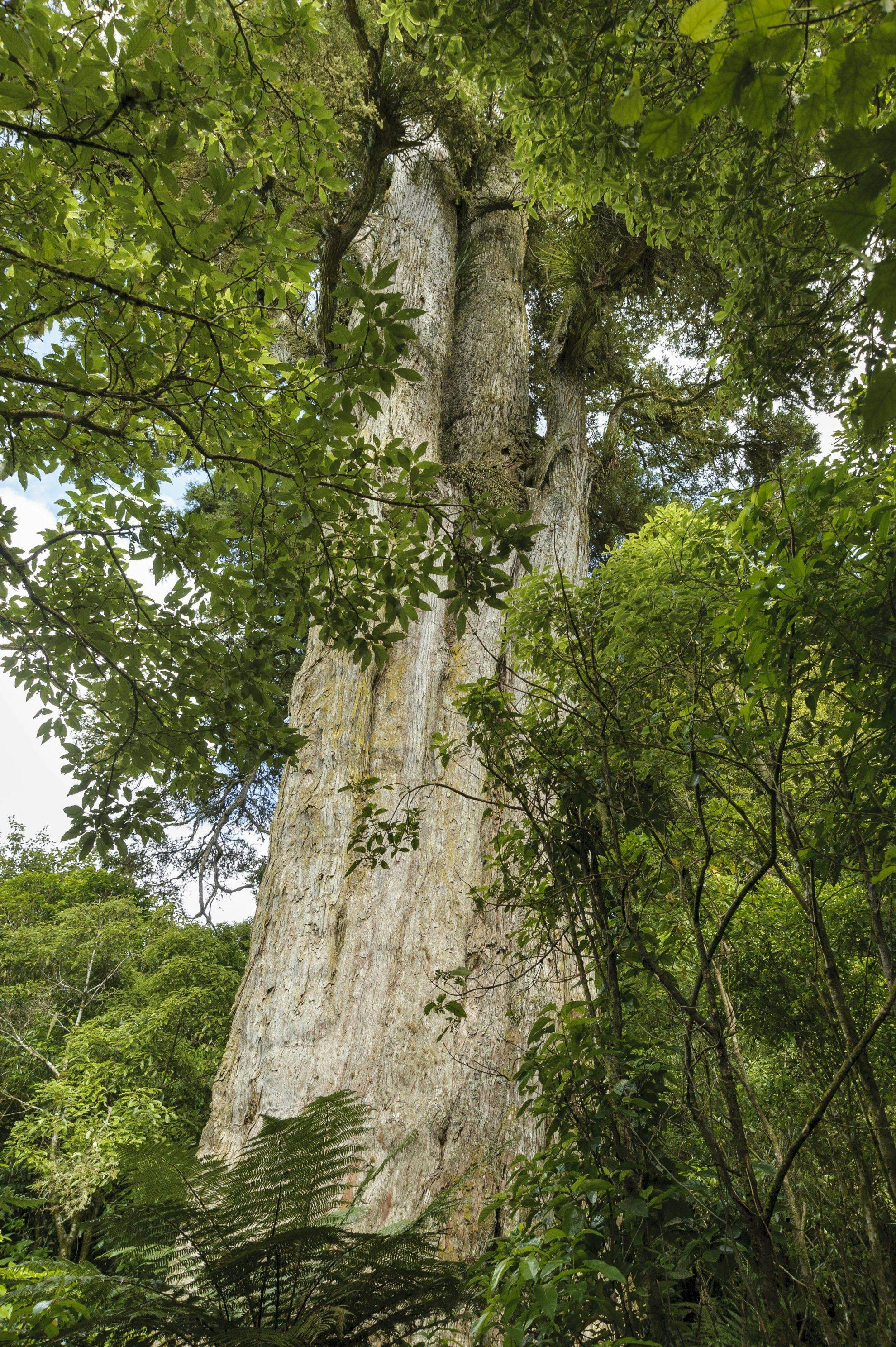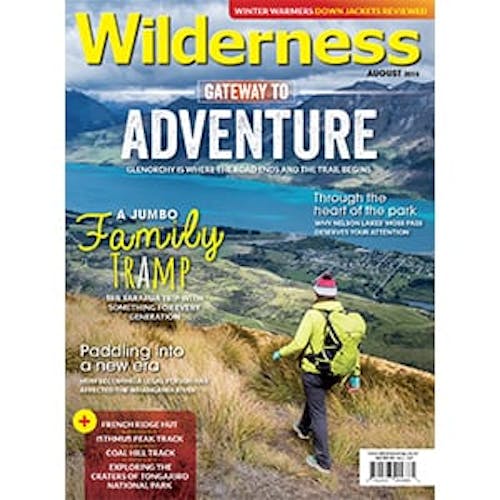Five places to see the mighty totara tree.
When tramping in regenerating fringe country, you come across them sometimes – a lichen-patterned, hoary old post that was once the strainer that held the wires to keep sheep in, or out. Farmers favoured totara posts because of their exceptional durability; something in the wood’s oils makes them highly resistant to the normal process of decay. Totara slabs made excellent cladding for huts too; a notable example is Cone Hut in Tararua Forest Park.
Maori also prized totara, which was soft enough to make a superb medium for carving, shaping into waka, and a myriad of other uses. In his comprehensive book, Totara, A natural and cultural history, ecologist Philip Simpson calls totara ‘the most important tree in Maori culture’. Indeed, totara is so valued that Maori say at the death of an important person, ‘Kua hinga te totara o te Waonui a Tane’ – the totara in the great forest of Tane has fallen.
The plant’s sharp, yellow-green leaves offer a spiky handshake, with its other distinguishing feature of red-brown bark, which often peels off in long strips. New Zealand has four species and one subspecies of totara, all in the Podocarpus genus. The largest, lowland totara (Podocarpus totara), can reach 40m, while the smallest is the shrubby snow totara (Podocarpus nivalis), which grows in subalpine parts of the Southern Alps, Tongariro and the central North Island ranges. Another species familiar to many trampers is Hall’s totara (Podocarpus hallii) which thrives in environments like that of the Waikato’s Mt Pirongia and the Ruahine Range.
Because of its value as a timber, totara was logged throughout the country during colonisation and disappeared from much of the country. Sadder still, much simply went up in smoke, notably from Central Otago, where great swathes of Hall’s totara burned in fires between 500 and 750 years ago. What we now think of as classic Central tussock country once had large pockets of this totara species.
Thankfully, most remaining totara now enjoy protection. Here are five sites worth visiting to see the forest giant.
1- Whangarei Falls Scenic Reserve, Northland
Many parts of Northland feature totara. These attractive falls north of Whangarei lie in a small forest remnant that includes totara.
2- Pouakani Forest Reserve, King Country
This tiny reserve, located off SH30, south-west of Mangakino, was created to preserve New Zealand’s largest known totara. From the rough car park, a narrow track wanders through the thin section of forest, bordered by farmland, to reach the Pouakani totara, which is protected by a surrounding fence. Soaring above, with four thick columns, it’s a giant of a tree, thought to be a thousand years old or more – a real spectacle of nature.
3- Pureora Forest Park, King Country
During the 1970s, conservationists took to the trees to stop the imminent felling of a significant podocarp forest at Pureora, which included many fine totara, one of which the protestors perched in. Today, you can visit the site and climb a purpose-built forest tower to gain a treetop view of the canopy.
4- Pelorus Bridge Scenic Reserve, Marlborough
Pelorus Bridge has long been a swimming and picnic stopover for those travelling between Marlborough and Nelson, and the pleasant, easy walks in this important lowland forest remnant contain some sizeable totara.
5- Peel Forest Scenic Reserve, Canterbury
The largest forest remnant near the town of Geraldine sports some fine totara trees. Several tracks provide walking opportunities in the area. The best for a totara encounter is Dennistoun Bush Track, which takes about an hour.








